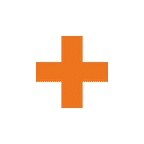World AIDS Day
December 1st marks World AIDS Day, an initiative started in 1988 as a chance for people all over the world to come together in the fight against HIV/AIDS. Since 1984, over 35 million people around the world have died of AIDS, which makes it one of the worst pandemics the world has ever seen. Today, there are more around 36.7 million people that are living with the HIV/AIDS, but only about half that have access to the proper treatments. The thing is, HIV is highly preventable and even treatable with proper education and access to things like medicine and prophylactics, which is why it’s so important to open up the conversation about HIV/AIDS awareness in order to put an end to the world-wide epidemic.
What is HIV?
- HIV or human immunodeficiency virus, is a virus that attacks the immune system by destroying white blood cells, making it hard for those infected to fight off illness.
- HIV is transmitted through the following bodily fluids: semen, blood, vaginal and anal fluids, and breast milk. (It cannot be transmitted through any other bodily fluids like sweat, saliva, or urine).
- Most common ways to contract HIV are through unprotected vaginal or anal sex, intravenous drug use, and mother-to-child transmission at childbirth or while breast feeding.
What is AIDS?
- AIDS or acquired immune deficiency syndrome, is the syndrome that develops from HIV.
- People can live for 10–15 years with HIV before AIDS develops.
- Once AIDS has developed, the body is no longer able to fight off even common infections, leaving the body susceptible to pneumonia, tuberculosis or other potentially fatal conditions.
There have been many advancements in HIV prevention and treatmen, which include better access to sexual education and condom use, more advanced prophylactic drugs to help fight off the virus, as well as antiretroviral drugs to help treat HIV once infected.
Prevention: Knowledge is key in preventing the spread of HIV worldwide, so it’s important to know how the virus spreads, and how to protect yourself:
- Practice safe sex by always wearing condoms, getting tested for HIV and other STDs, and making sure you talk to your partner about their status and testing as well.
- Do not share needles with anyone who is HIV positive, or has not been tested.
- For those at high risk of contracting HIV, use PrEP:
- The Pre-exposure prophylaxis is a combination of two medications that help prevent infection of HIV for those who are not already infected, but are at high exposure.
- It is a daily medication, and must be taken as directed for best results.
- Those with partners who are HIV positive, have multiple partners as risk, or use needles that could be infected are encouraged to take PrEP.
- PrEP may also be an option for women with HIV positive partners who would like to get pregnant.
Treatment: For those already living with HIV/AIDS, there are many antiretroviral treatments available that lower the levels of HIV in the body, and boost the immune system enough to lead a healthy life. There are many drugs and combinations of medications on the market, so it’s best to talk to a healthcare provider about what treatment plan is best for you.
The UN committee on AIDS (UNAIDS) has put together a strategic plan to wipe out the AIDS pandemic by 2030, which includes many resources and fact sheets, but the most important thing to do is spread knowledge and awareness! Countries like the U.S. and the U.K. have seen massive decreases in HIV/AIDS cases in the last 20 years, mostly due to the accessibility of things like condoms, comprehensive sexual education for at-risk populations, as well as antiretroviral treatments. But many regions of the world are still severely affected by the spread HIV. Countries across Africa and Southeast Asia are particularly at risk because of the lack of resources available, as well as the stigma and discrimination that still surrounds the virus in many cultures. So even if you or a loved one is not dealing with HIV/AIDS, take a moment on World AIDS Day to help someone that is. You can find out more about how to participate at World AIDS Day, AIDS.gov, and UNAIDS.
Written by Olivia Murphy
